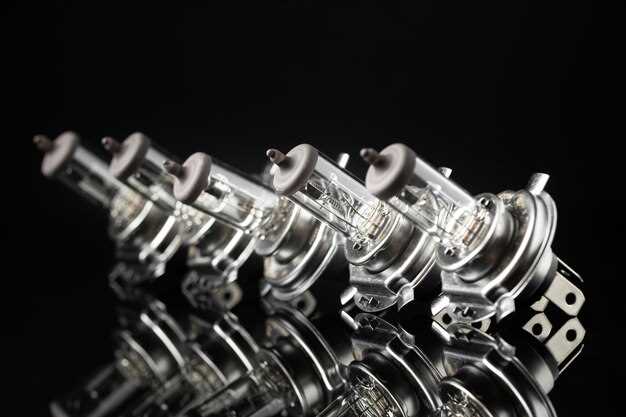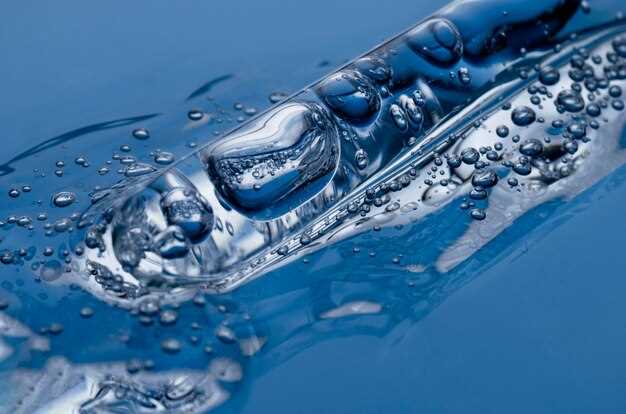
As environmental concerns continue to rise, the performance and emissions of diesel engines have come under increasing scrutiny. The cleanliness of these engines plays a crucial role not only in their operational efficiency but also in their overall impact on air quality. Understanding the factors influencing diesel engine cleanliness is essential for manufacturers, mechanics, and consumers who value both performance and sustainability.
In the context of evolving regulations and technological advancements, modern diesel engines are equipped with sophisticated systems designed to minimize emissions and improve fuel efficiency. Evaluating these systems requires a comprehensive approach that considers not just the design of the engine but also the quality of fuel, maintenance practices, and the impact of driving conditions. Key components such as fuel injectors, exhaust after-treatment systems, and the use of biodiesel are critical in determining the cleanliness of the combustion process.
Furthermore, advancements in diagnostic tools and monitoring technologies allow for more precise assessments of engine cleanliness. Techniques such as ultrasonic cleaning and the integration of sensors provide insights into performance metrics that were previously difficult to measure. This article will explore these methodologies, their implications for the longevity of diesel engines, and the potential for future developments in maintaining engine cleanliness while adhering to stricter emission standards.
Understanding Diesel Engine Emission Standards and Their Impact on Cleanliness

The cleanliness of modern diesel engines is heavily influenced by emission standards set by regulatory bodies worldwide. These standards, which aim to reduce harmful pollutants released into the atmosphere, play a crucial role in the design and operation of diesel engines.
Emission standards typically specify allowable limits for various pollutants, including nitrogen oxides (NOx), particulate matter (PM), hydrocarbons (HC), and carbon monoxide (CO). In the United States, the Environmental Protection Agency (EPA) enforces stringent guidelines, while the European Union has its own set of regulations, known as Euro standards. The progression of these standards over the years reflects an ongoing commitment to environmental protection and public health.
Compliance with these standards requires the incorporation of advanced technologies in diesel engines. The implementation of Exhaust Gas Recirculation (EGR), Selective Catalytic Reduction (SCR), and Diesel Particulate Filters (DPF) are common practices. EGR works by recirculating a portion of the engine’s exhaust back into the combustion chamber, effectively lowering NOx emissions. SCR involves injecting a urea-based solution into the exhaust system, which converts NOx into harmless nitrogen and water. DPFs capture and store particulate matter, preventing it from being released into the atmosphere.
The impact of these emission standards on the cleanliness of diesel engines is significant. By mandating reduced pollutant outputs, manufacturers are compelled to innovate and enhance engine performance while minimizing environmental damage. As a result, modern diesel engines not only meet regulatory guidelines but often exceed them, delivering cleaner combustion processes.
Furthermore, these regulations have catalyzed a shift towards alternative fuels and hybrid technologies, promoting even higher levels of cleanliness in diesel operations. The focus on sustainability is driving research and development towards cleaner diesel options, aiming to strike a balance between efficient energy use and environmental responsibility.
However, the journey toward complete cleanliness is ongoing. Continuous monitoring and advancements in emission standards can further push the boundaries of what diesel technology can achieve. The emphasis on cleaner engines not only benefits the environment but also enhances the public perception of diesel as a viable and responsible energy source.
Assessing the Role of Fuel Quality in Maintaining Engine Cleanliness
The quality of diesel fuel plays a crucial role in the cleanliness of modern diesel engines. High-quality fuel is essential for optimal combustion, which directly impacts the formation of deposits and contaminants. Fuel that contains impurities, such as dirt, water, or microbial growth, can lead to injector fouling and other issues that hinder engine performance.
One of the primary components of diesel fuel is its cetane number, which measures the fuel’s ignition quality. Fuels with higher cetane numbers ignite more readily, resulting in more complete combustion and less soot formation. In contrast, low-quality fuels may have a lower cetane number, leading to prolonged combustion times and increased emissions of unburned hydrocarbons and particulates, all of which contribute to engine contamination.
Additives also play a significant role in fuel quality. Many high-quality diesel fuels contain detergents and dispersants designed to prevent deposit formation and promote the cleaning of existing deposits within the fuel system and combustion chamber. These additives help maintain injector performance and ensure smooth fuel flow, which is critical for maintaining engine cleanliness and efficiency.
Additionally, the presence of sulfur in diesel fuel can affect engine cleanliness. While modern engines are designed to work with low-sulfur diesel, cleaner fuels with reduced sulfur content are less prone to forming corrosive byproducts that can lead to accelerated wear and deposits within the engine. Therefore, using ultra-low sulfur diesel significantly contributes to preserving engine cleanliness over time.
Storage conditions and handling practices also impact fuel quality. Contaminants can easily enter fuel tanks, and poor storage can lead to fuel degradation. It is crucial for fleet operators and engine owners to ensure their diesel fuel is stored properly and is replaced regularly to minimize the risk of contamination.
In conclusion, maintaining high fuel quality is essential for the cleanliness and longevity of modern diesel engines. Clean fuel ensures efficient combustion, reduces deposits, and enhances overall engine performance, ultimately leading to lower maintenance costs and improved reliability.
Monitoring Cleaning Technologies and Their Effectiveness in Diesel Engines

In the quest for improved efficiency and reduced emissions, modern diesel engines are often equipped with advanced cleaning technologies. These technologies predominantly focus on the removal of soot, particulates, and other contaminants from engine components, ensuring optimal performance over extended operational periods.
Diesel Particulate Filters (DPFs) are one of the most prevalent cleaning technologies used in contemporary diesel engines. These filters are designed to capture and store soot from the exhaust system. The effectiveness of DPFs is often monitored through various sensors that track the filter’s pressure differential. By assessing the pressure drop across the filter, technicians can determine its saturation level and schedule necessary regeneration processes to burn off accumulated particulates.
Another critical technology is the Selective Catalytic Reduction (SCR) system, which significantly reduces nitrogen oxide (NOx) emissions by injecting a urea-based solution into the exhaust stream. The effectiveness of SCR is evaluated by emissions testing, which measures the concentration of pollutants before and after the treatment process. Continuous monitoring sensors play a key role in ensuring optimal urea dosing, thereby enhancing the system’s overall efficiency.
Ultrasonic Cleaning is garnering attention as a newer method for maintaining cleanliness in diesel engines. This technology utilizes high-frequency sound waves to create microscopic bubbles in a cleaning solution, which implode and produce powerful cleaning effects. Its effectiveness is monitored through regular inspections and evaluations of particulate levels in crucial engine components, such as injectors and fuel systems.
Moreover, real-time telemetry systems are increasingly employed to monitor the performance of various cleaning technologies. These systems provide data on temperature, pressure, and particulate levels, allowing for immediate identification of potential cleaning issues and timely interventions. The integration of this data with engine management systems enables predictive maintenance, which can preemptively address cleanliness concerns before they escalate into significant problems.
Ultimately, the effectiveness of cleaning technologies in diesel engines hinges on consistent monitoring. By leveraging advanced sensor technologies and data analytics, engine manufacturers and operators can ensure that diesel engines remain clean, efficient, and compliant with stringent environmental regulations.


